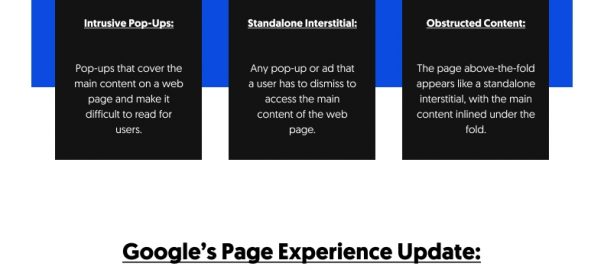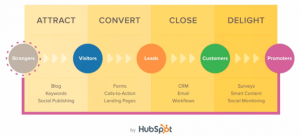There was a lot of anticipation about Google’s Page Experience Update 2021 and a general concern that it might impact search rankings adversely.
Sounds familiar to you?
Don’t worry. Your webpages will not see a pank drop if you prepare them for the new update. For doing that, you must first understand what the update is all about and what metrics now matter to Google.
So here goes.
What Is Google’s Page Experience Update 2021?
The new update counts user experience (UX) as a direct page ranking factor. According to it, a web page that doesn’t provide a stellar UX doesn’t deserve a good ranking.
Under the update, a site’s UX will be assessed by the following five parameters:
1. Core Web Vitals
Core Web Vitals will measure the experience that your website delivers. It includes three main metrics:
LCP or Largest Contentful Paint: It’s the time taken for your website to load on a user’s screen after they click your website link.
CLS or Cumulative Layout Shift: It measures the tendency of your website elements to shift when a user interacts with them.
FID or First Input Delay: It measures the time taken for the browser to receive a user’s first click on your website.
SEO Tips to Nail Core Web Vitals
- Check out the Core Web Vitals Report by Google Search Console to understand why your pages load slowly.
- Bulky image files on your webpage are a prime reason for low loading speed. It’s advisable to compress your images before publishing them.
2. Security Issues
If a website uses deceptive software (malware) that tricks visitors into sharing their personal information, Google’s new update will demote their rankings.
Security threats, as defined by Google, include:
- Malware
- Hacked content
- Social engineering
SEO Tips to Avoid Security Issues:
- Don’t include unnecessary lead generation forms on your website.
- Include links and ads from reputable, verified sources.
3. HTTPS
If your HTTP/HTTPS ratio is low, Google crawlers will rank you higher under the new algorithm.
Adding HTTPS to your page URLs offers three layers of security in the form of:
- Data encryption
- Authentication
- Data integrity
SEO Tips to Nail HTTPS:
- Strive to get an HTTPS by SSL certification.
- Use a schema markup generator tool to add structured data to your site’s HTML.
4. Ad Experience
A site that uses intrusive or distracting ads/pop-ups will be down ranked by Google after the new update.
Interstitials that count as distracting under this category are:
- Standalone or native interstitials that obstruct the main content
- Intrusive pop-ups that disrupt the browsing experience
SEO Tips to Optimize Ad Experience:
- Use pop-ups with discretion.
- Place ads on sidebars or other unobtrusive places
5. Mobile Usability
As the name suggests, a website needs to be mobile-friendly in order to rank well for this parameter under the new algorithm.
SEO Tips to Build Mobile-Ready Sites:
- Use large fonts that are legible on small mobile devices.
- Stagger your links so users are able to click them easily.
- Include plenty of whitespace for easy navigation.
Looking for More Tips?
If you incorporate the above tips in your webpages, you can deal with the Page Experience Update with ease.
But to master the algorithm and use it to boost your ranking, you need to learn advanced SEO tips, available in this infographic by the Attrock team. Go check it out.

Image Courtesy: Attrock.com
Digital & Social Articles on Business 2 Community
(9)







